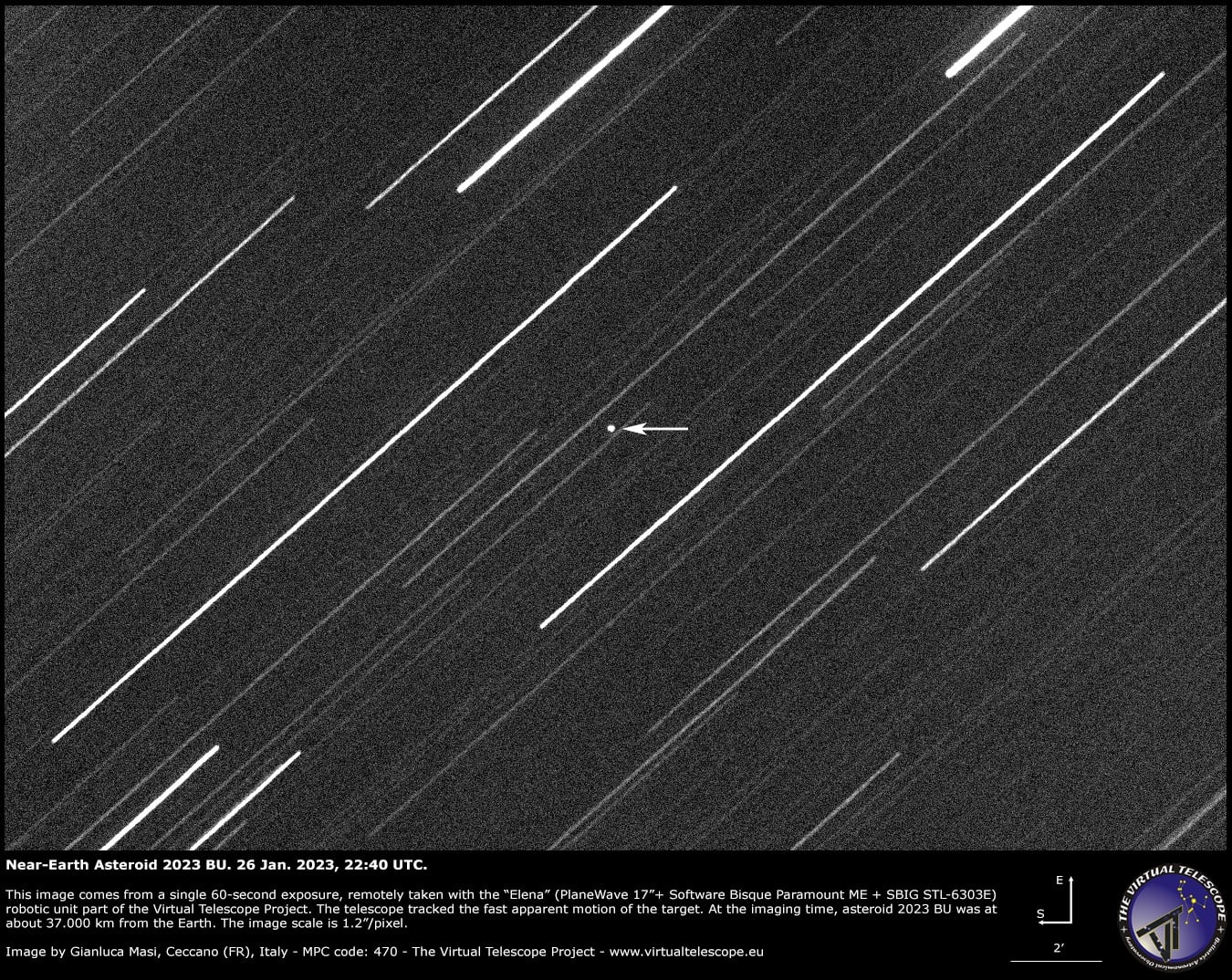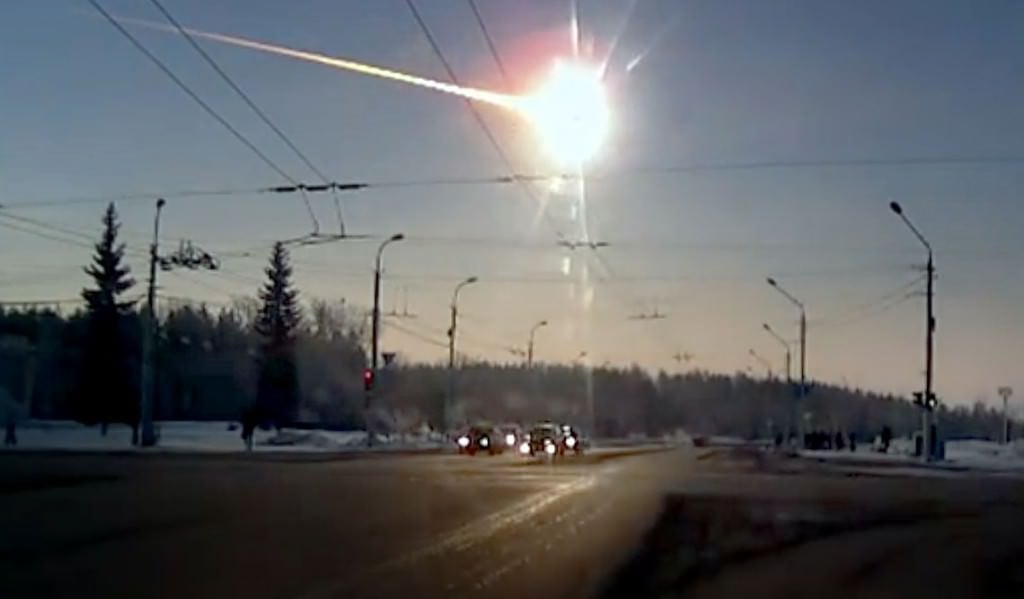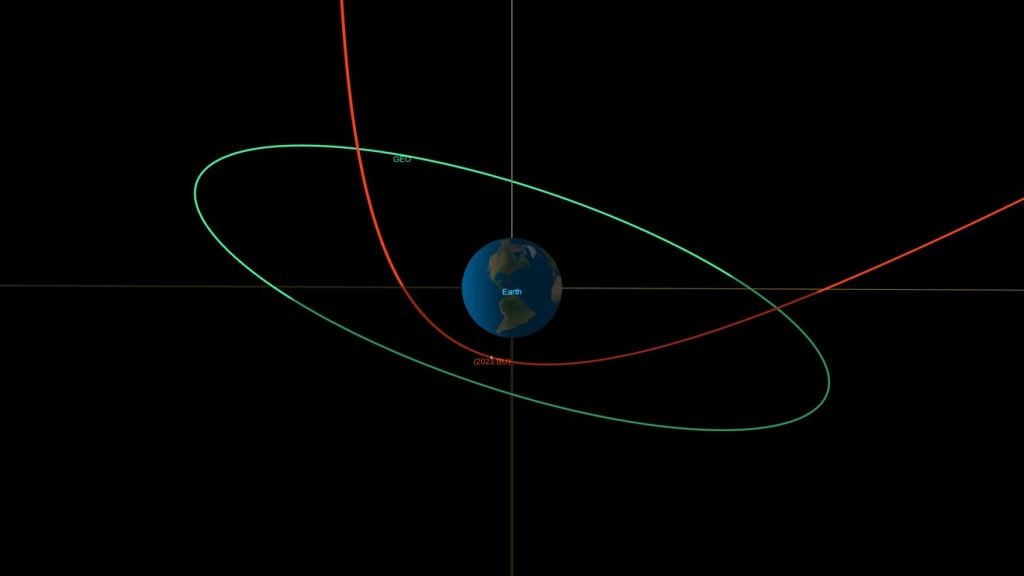On January 26, a truck-sized asteroid flew past Earth, coming extremely close – within 3,600 km (2,200 miles) above the planet's surface. This is well within the orbit of geosynchronous satellites and NASA says this flyby is one of the closest approaches by a near-Earth object ever recorded.
The asteroid, named 2023 BU's has an estimated size of 3.5m to 8.5m across (11.5ft to 28ft). Italian astronomer Gianluca Masi, who leads the Virtual Telescope Project, captured images and video of the flyby and said a huge audience joined in for the live feed. At its closest approached, it zoomed over the southern tip of South America at about 4:27 p.m. PST (7:27 p.m. EST.)
This asteroid was only discovered a few days ago, on January 21, 2023, by amateur astronomer Gennadiy Borisov. His name is likely familiar as he discovered the interstellar comet 2I/Borisov.
NASA said based on the size of the asteroid, if it did enter Earth's atmosphere, it likely would have disintegrated high in the atmosphere, producing a spectacular fireball. A few meteorites may have harmlessly reached the ground.
For comparison, the Chelyabinsk meteor that entered Earth's atmosphere over southern Russia in 2013 was about 20m (66ft) across. It produced a shockwave that shattered windows, causing injuries from breaking glass. But that event alerted the world that unknown space rocks are out there.
The system in place for alerting astronomers to newly found asteroids meant that Borisov, from Crimea, sent his data to the Minor Planet Center (MPC) – the internationally recognized clearinghouse for the position measurements of small celestial bodies – and the data was then automatically posted to the Near-Earth Object Confirmation Page.
Loading tweet...
— View on Twitter
NASA said that after sufficient observations were collected, the Scout impact hazard assessment system was quickly able to determine that the asteroid's path would bring it close to Earth, but there was no danger of impact. Within three days, a number of observatories around the world had made dozens of observations, helping astronomers better refine 2023 BU's orbit.
Because of how close it came to earth, 2023 BU's orbit has been modified by Earth's gravity. NASA said that before encountering Earth, the asteroid's orbit around the Sun was roughly circular, approximating Earth's orbit, taking 359 days to complete its orbit about the Sun. After the flyby, the asteroid's orbit will be more elongated, moving it out to about halfway between Earth's and Mars' orbits at its furthest point from the Sun. The asteroid will then complete one orbit every 425 days.
Now that astronomers know this asteroid is out there, they'll keep an eye on when it might have a future encounter with Earth.
 Universe Today
Universe Today


